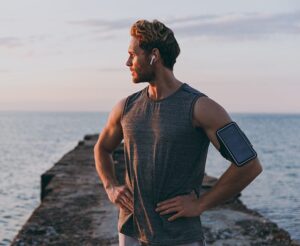The Non-Surgical Shoelace Breast Cast Technique

In the July 2014 issue of Aesthetic Surgery Journal (ASJ), Dr. Daniel Mills and Dr. Alexander Ereso describe an innovative technique that nonsurgically treats breast asymmetry and double bubble-deformities that may appear after implant-based breast augmentation in the early post-operative period. Previously, the only methods that could fix these types of problems involved undergoing revision surgery, which is not without its risks, including the risks of surgery and anesthesia. Furthermore, revision surgery may involve further financial costs to patients. The Shoelace Breast Cast is a technique that effectively treats the asymmetry while eliminating those factors that accompany revision surgery. When worn continuously, the shoelaces act as an external breast cast that allows the inframammary fold to be set and heal in the correct position.
The technique utilizes the placement of shoelaces around the breast in a manner that acts as a “cast” to allow the inframammary fold of the breast to heal in the correct position. Two wide-bodied, flat shoelaces are tied together and then wrapped around the neck, under the breast, around the back, and then tied together and worn for a prescribed length of time. The shoelaces effectively create a new inframammary fold in the location on the chest that will yield symmetry with the opposite breast. The shoelace breast cast, if placed and worn properly, has been shown to be a cheap and effective technique that solves a significant potential complication. Furthermore, the technique can be utilized to raise the inframammary fold on both breasts if the implants are considered to be placed too low. Based on almost 20 years of results, the shoelace breast cast has a success rate above 90%, meaning the vast majority of patients can have their asymmetry or double-bubble deformity corrected without the need for undergoing revision surgery.
About Alexander Ereso, MD
Dr. Ereso graduated from the University of California at Berkeley before earning his medical degree from Meharry Medical College, School of Medicine. He then completed a full residency in general surgery at UCSF-East Bay followed by a residency in plastic and reconstructive surgery at Wayne State University. Dr. Ereso received further subspecialty training completing a fellowship in reconstructive microvascular surgery at the University of Pittsburgh and an aesthetic surgery fellowship with Dr. Daniel Mills in Laguna Beach, CA. Dr. Ereso is available for interview upon request.


